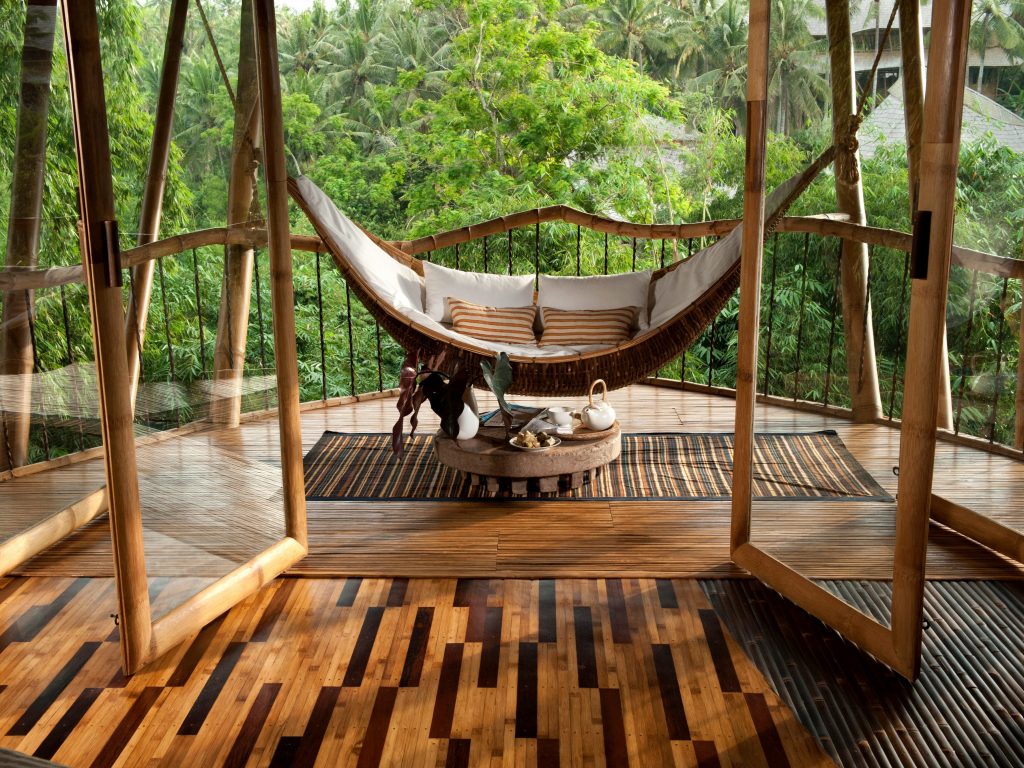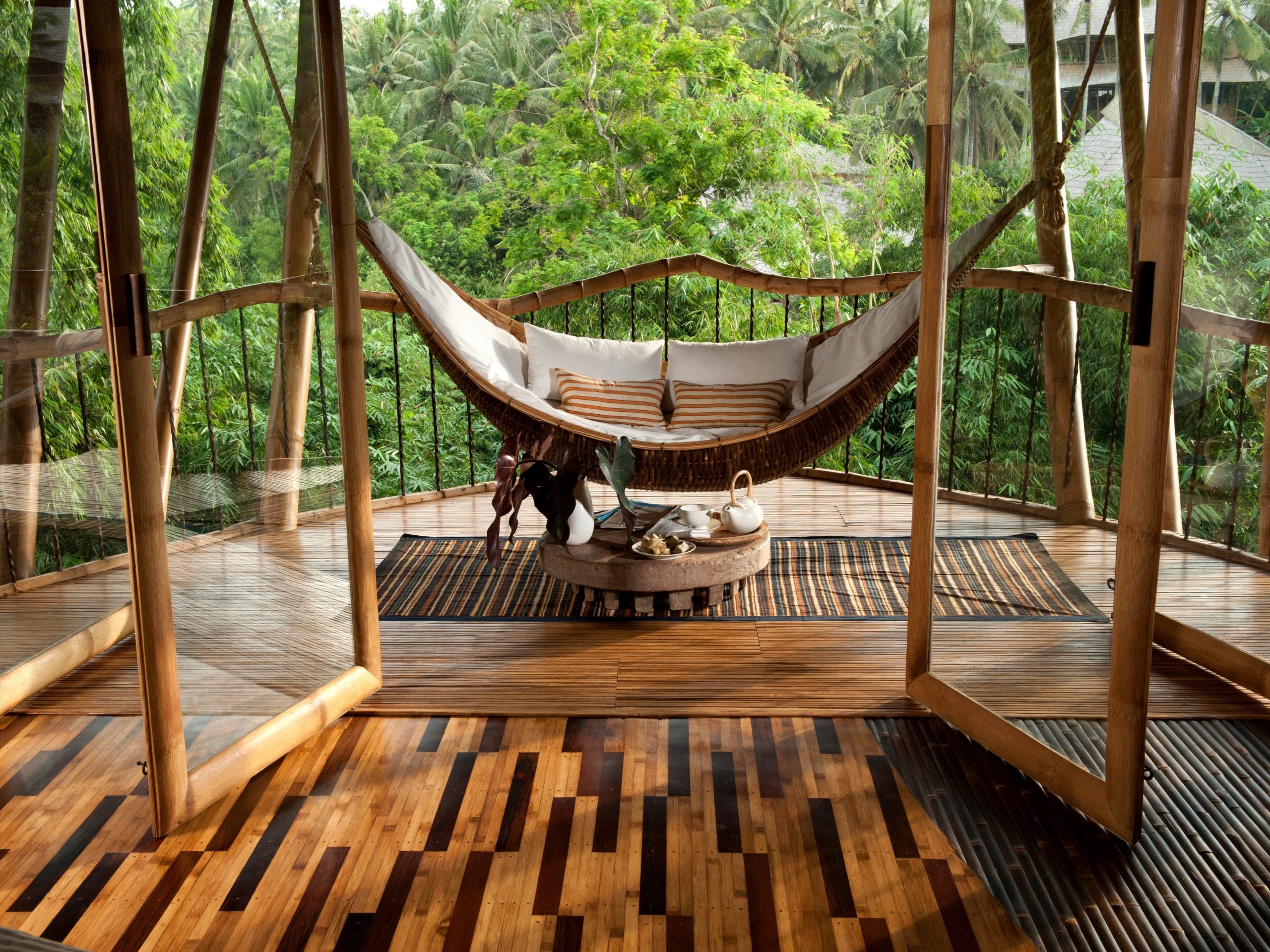
Courtesy Ibuku
A teardrop-shaped door spins on its axis, a four-poster bed has aircon jets keeping it cool, and a kitchen counter carved from granite sparkles in the sunlight. No, you're not in a cartoon or a futuristic movie: You're in a six-floor mansion made of bamboo in the jungle in Bali, Indonesia.
This towering castle made from wild grass came from the imagination of Elora Hardy.
As a child, Hardy drew fairy-tale castles in her coloring book. Now, at the age of 41, she is making them for real. She grew up Ubud, Bali, where babbling rivers, jungle ravines, and artisan-filled villages surrounded her home.
"My earliest memory of Bali was my fifth birthday party. I remember making scarecrows together out of thatch, coconut shells and bamboo, and parading them up to the fields," Hardy told Insider.
Since then, she's worked as a print designer for Donna Karan in New York City and launched the pioneering Bali architecture firm Ibuku, which is known for creating one-of-a-kind buildings from bamboo. In 2019, she was named an Honorary Royal Designer for Industry by the Royal Society of Arts (RSA), recognition that has previously been bestowed upon the likes of Royal Designers Dame Vivienne Westwood and famed Apple designer Sir Jonathan Ive.
At the award ceremony, the RSA commended Hardy for "leading the world in designing buildings from completely renewable resources. Buildings that are so naturally beautiful that they promote peace and well-being in everyone that experiences them."
Or, as Mark Major from The Association of the Royal Designers for Industry, told Insider, "She simply leads by example of her work."
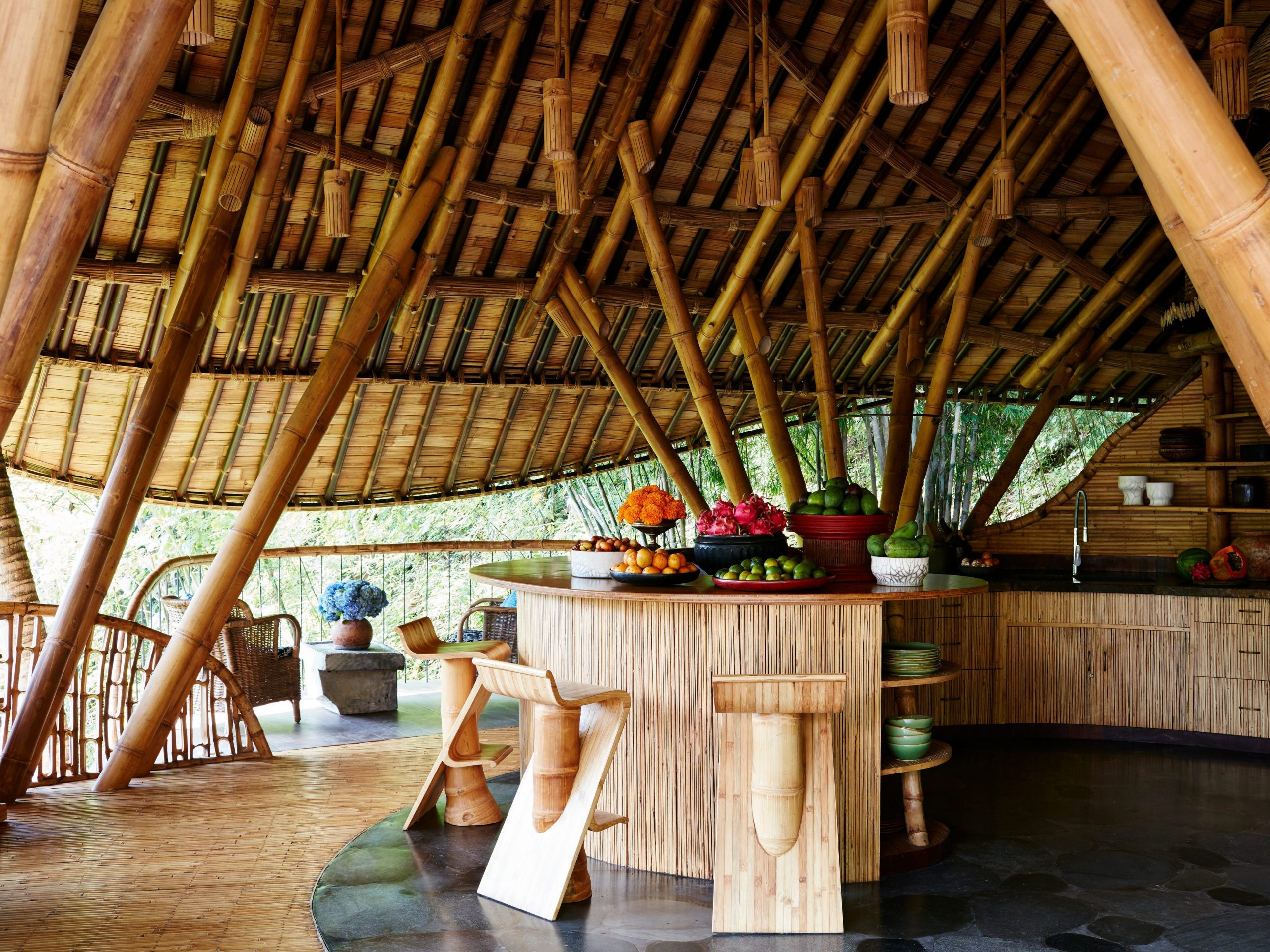
Courtesy Ibuku
While Hardy's roots are in Bali, most of her schooling took place in the US. She went to an American boarding school and graduated from Tufts University with a Bachelor of Fine Arts, after which she started working for Donna Karan as a print designer in New York City. She remained there for five years.
"It was exciting designing in New York," says Hardy. "I enjoyed making things, but I also needed to make sense of how they were made and what the impact would be."
While Hardy was working in the Big Apple, her father, the jewelry designer John Hardy, sold his business and launched the famed Green School in Bali, which accepts 500 students from preschool and high school. He built the eco-friendly school from bamboo and had plans to create a village - which he called the Green Village - surrounding it, but his creative director died before the first home was finished. That's when John Hardy turned to his daughter for help. In 2010, she left New York and returned to Bali, where she immediately began working with his team.
While Hardy had grand plans for executing her father's vision, the first bamboo house she built in Bali was simple.
"I built myself a round yurt, but on stilts. I fell in love with the outlook over the rice fields. Being there immersed me back into what I had been missing about Bali," she said.
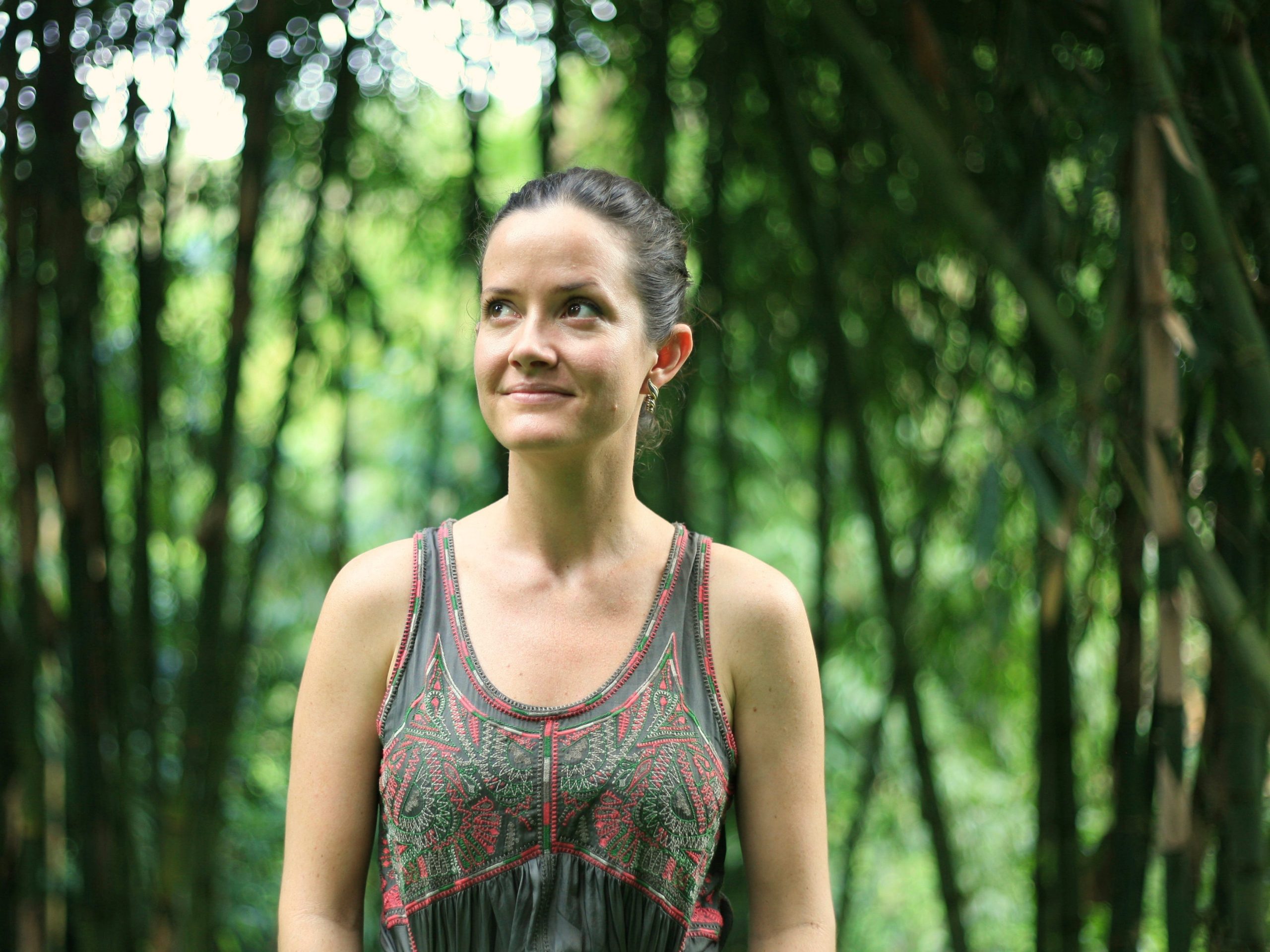
Courtesy Ibuku
Designing the tallest bamboo building in Bali
It wasn't long before Hardy was pushing design boundaries.
By December 2010, with the help of the team of architects and engineers who had worked on the Green School, Hardy had built her first bamboo mansion. Rather than just use their plans, she tweaked them to focus on the flow of the house and how it would be used by a family. Then, over the next eight years, she built 17 more homes, which are now largely used as second homes by foreigners.
The crowning jewel of Hardy's Green Village is the Sharma Springs residence, a six-floor mansion made from seven varieties of bamboo that she built in 2012. It took Hardy and her team a year to build Sharma Springs, which now claims the title of the tallest bamboo building in Bali.
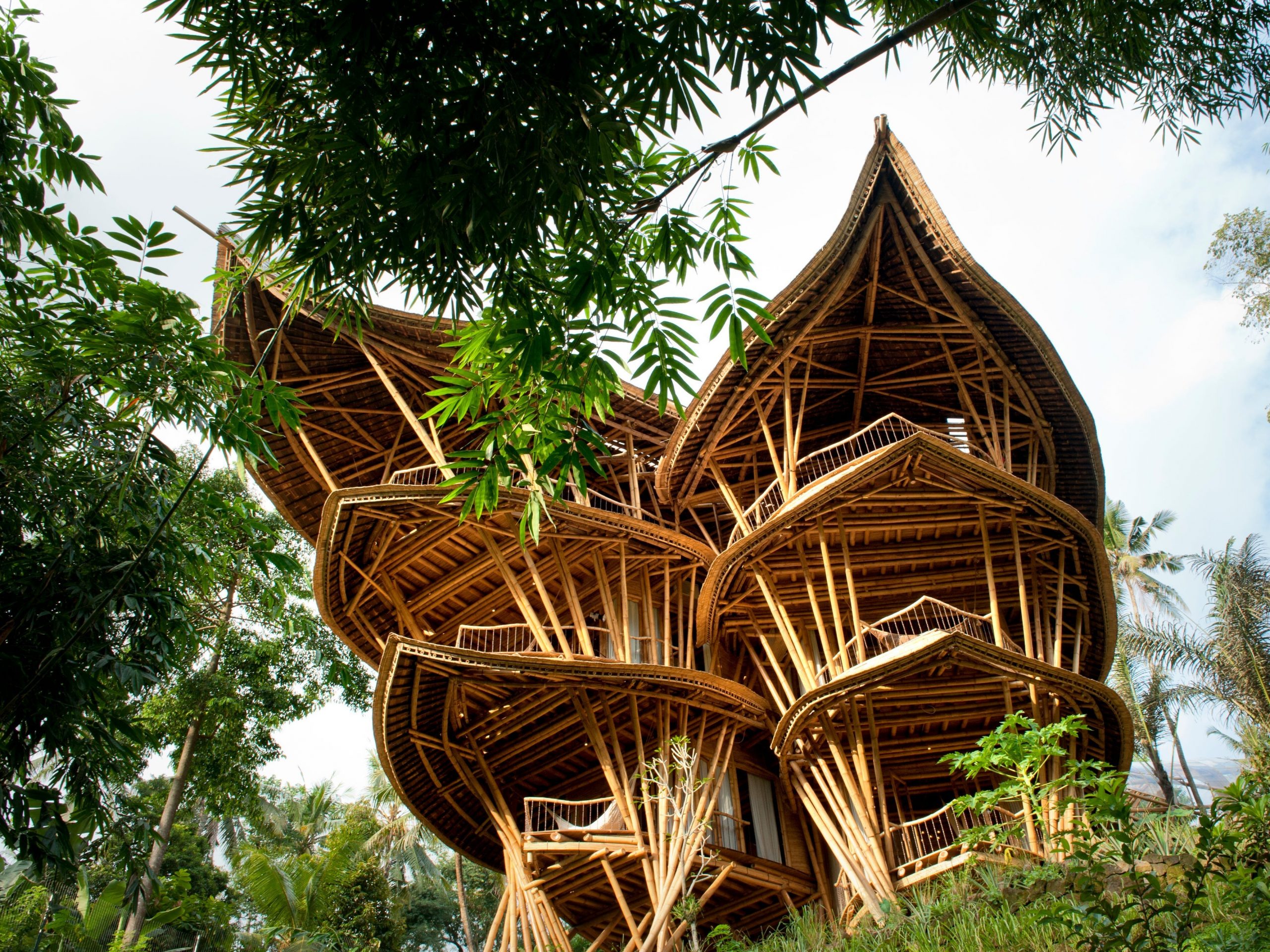
Courtesy Ibuku
Visitors enter the Dr. Seuss-style mansion via a 15-meter-long bamboo tunnel. From there, a sweeping staircase, which lies at the center of the house, leads to each floor of the building. Inspired by the petals of the lotus flower, the prow-shaped roof is designed to catch the tropical breezes and keep the home cool.
Four bedrooms, each with shower ensuites, can be found scattered over the floors, along with a fully fitted kitchen, media room, swimming pool, outdoor spa, yoga pavilion, and guest house in the grounds next to the Ayung River.
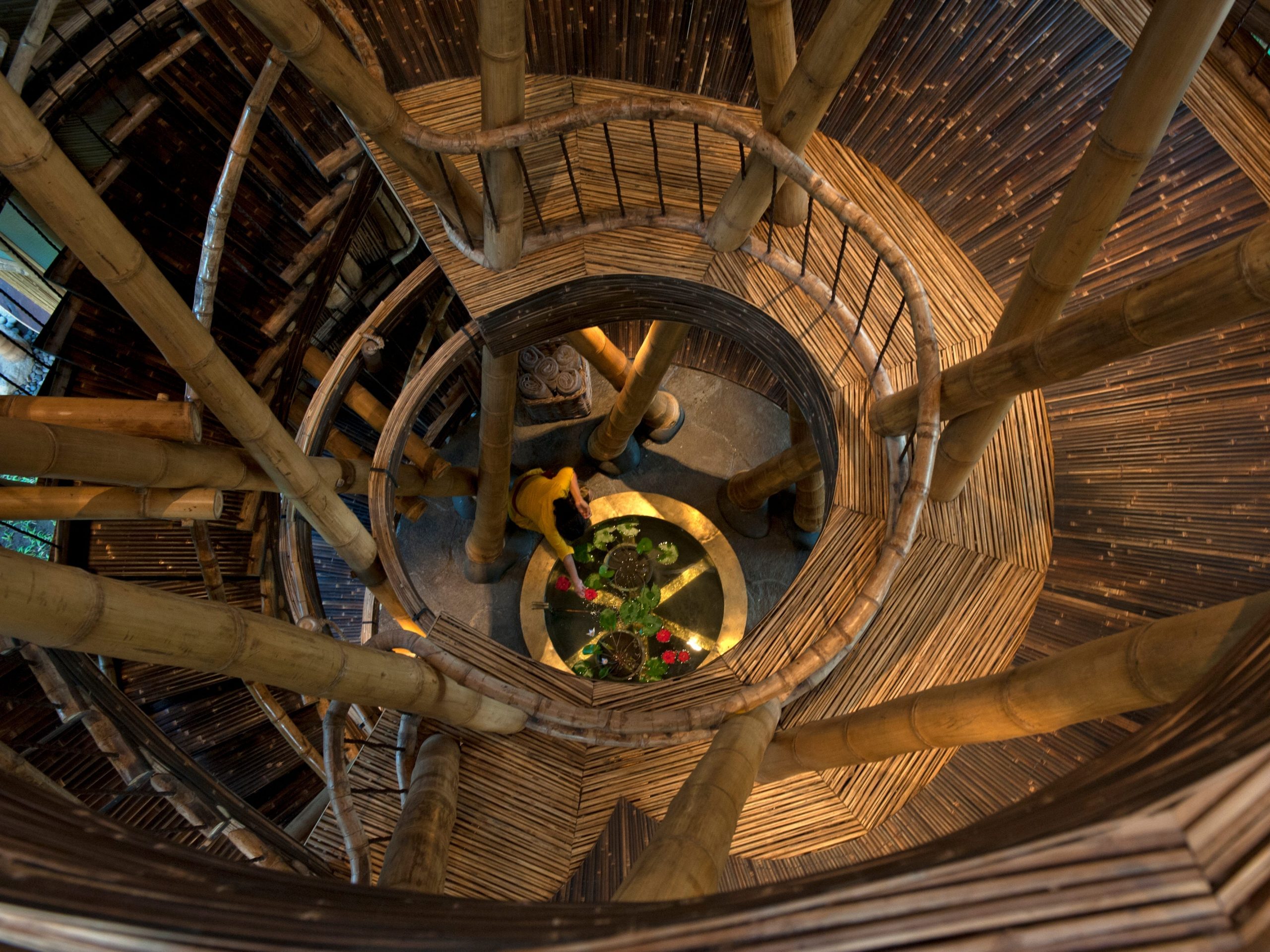
Courtesy Ibuku
The family who owns the home now rents it to holidaymakers for $910 per night on Airbnb.
Mumbai online bookstore owner Neha Talwalker stayed in Sharma Springs when she went to a wedding in Bali in 2019. She told Insider the experience of staying in the home was one of witnessing human ingenuity and versatility firsthand.
"Every element of the house flows into each other, from the hand railing of the stairs to the tables, chairs and even bookcases and washrooms," Talwalker said.
Talwalker added that the building immersed its guests in nature: "My favourite hour has to be sunset. The rooms are bathed in a golden glow that truly sets off the natural hues of the bamboo."
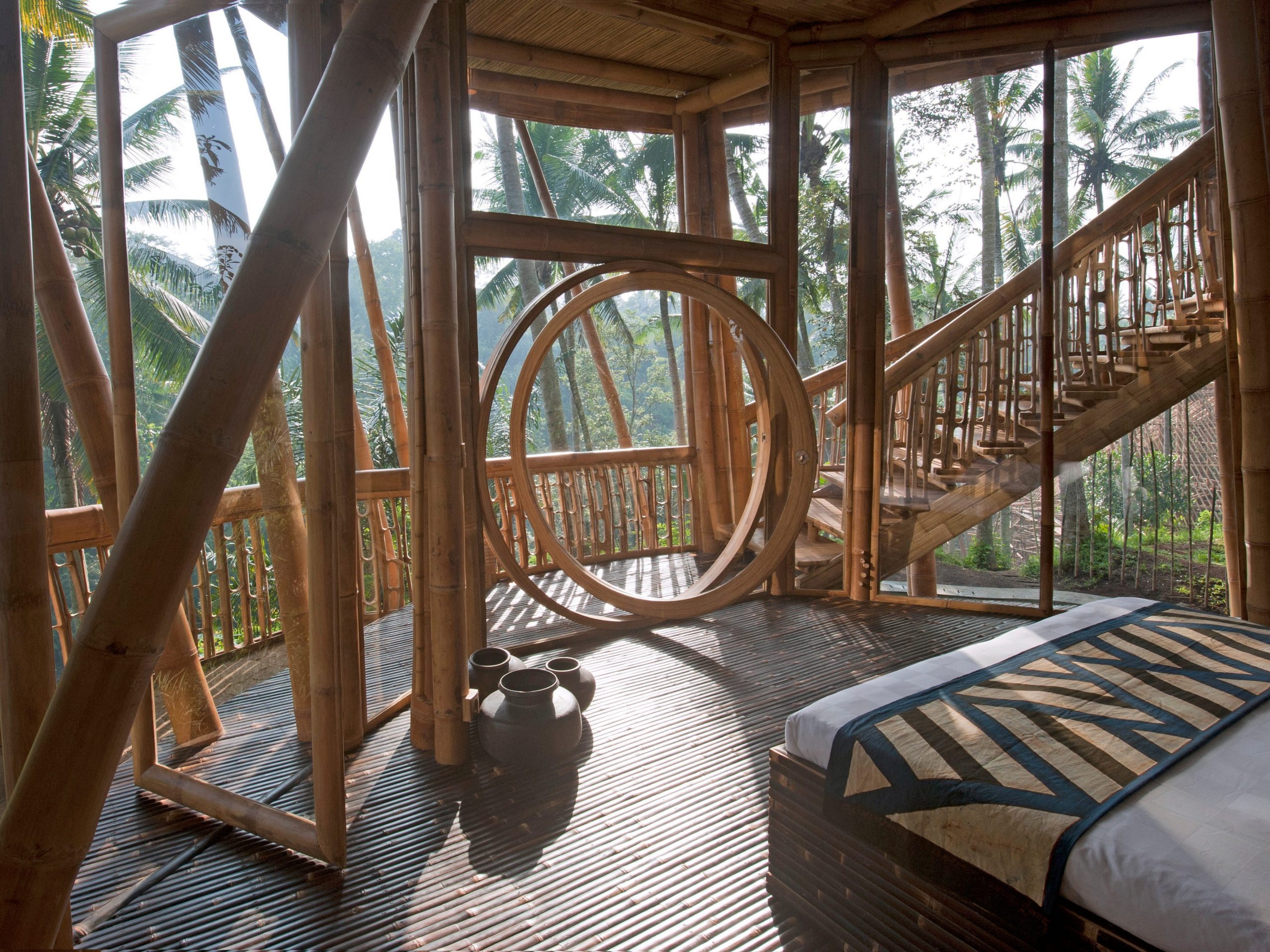
Courtesy Ibuku
In 2010, Hardy teamed up with the original team of architects and designers who helped create the Green School to launch Ibuku. As Creative Director, she now oversees a staff of 130 people. Ibuku has gone on from building mansions in Bali to selling bamboo structures and designer bamboo furniture all over the world.
But when she started out, not everything ran smoothly. "Sourcing light fittings and appliances that would look right with the bamboo was a challenge, as in Bali it was a limited market at the time," said Hardy.
One defining feature of Ibuku's homes, which can sell for as much as $1.4 million, is that she blends the needs of a modern family with a natural aesthetic.
Media rooms are hidden away in bamboo pods, while open-air bedrooms contain air-conditioned beds that have chilled air piped in via bamboo posts. She also incorporates other eco-friendly features such as solar power, rainwater filtering stations, and permaculture food gardens into her designs.
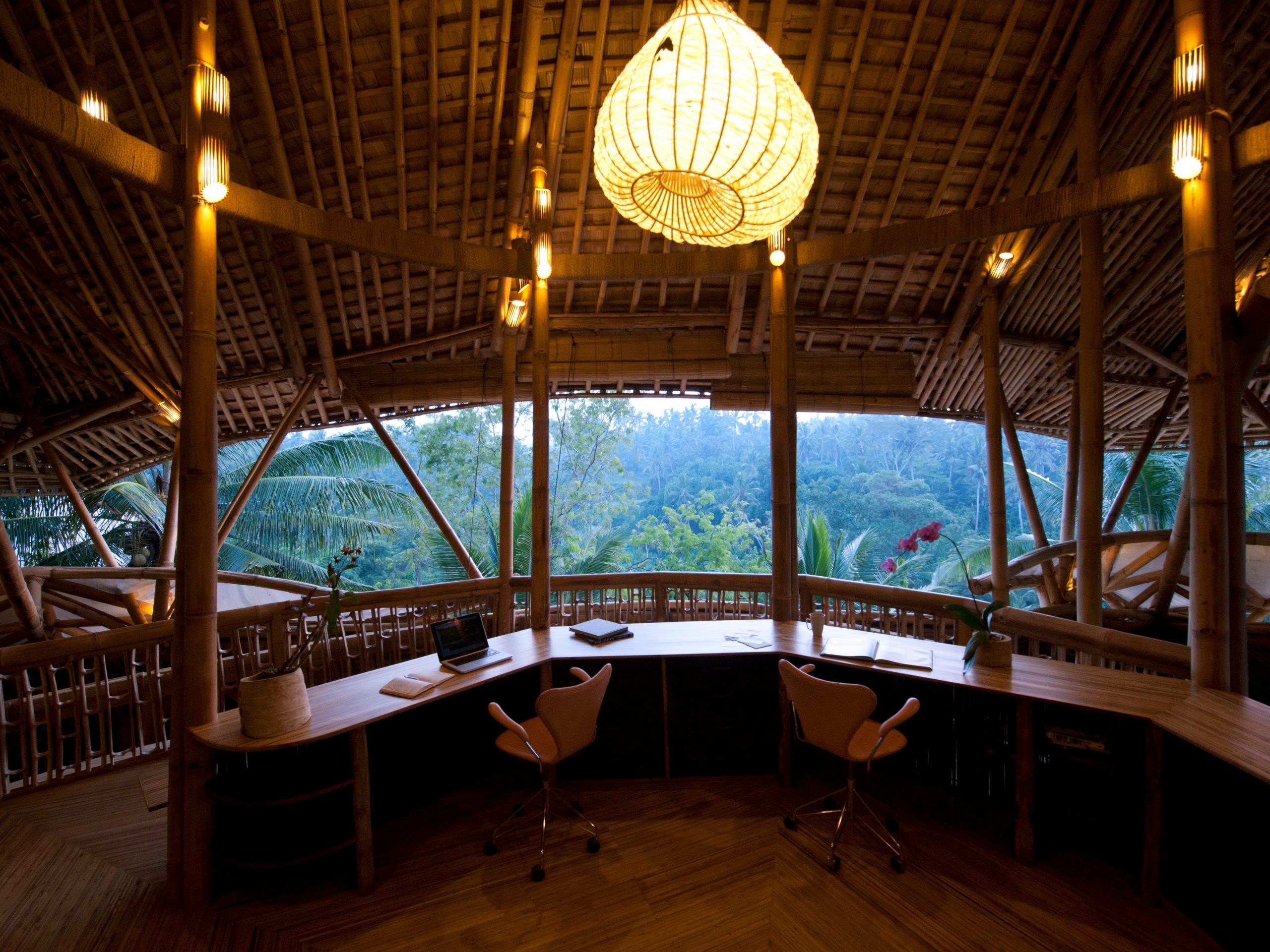
Courtesy Ibuku
As for inspiration, Hardy says the bamboo itself, which they collect from ravines on family-owned farms, will often lead the design. No two pieces are the same and the 18-meter usable length is often one huge curve. But while it brings its challenges, it also has potential: It takes just three years for bamboo - which has the tensile strength of steel - to grow to maturity.
Hardy also says the material presents a challenge: "Bamboo constantly requires flexibility, new ways of thinking, and demands bespoke attention to be best expressed."
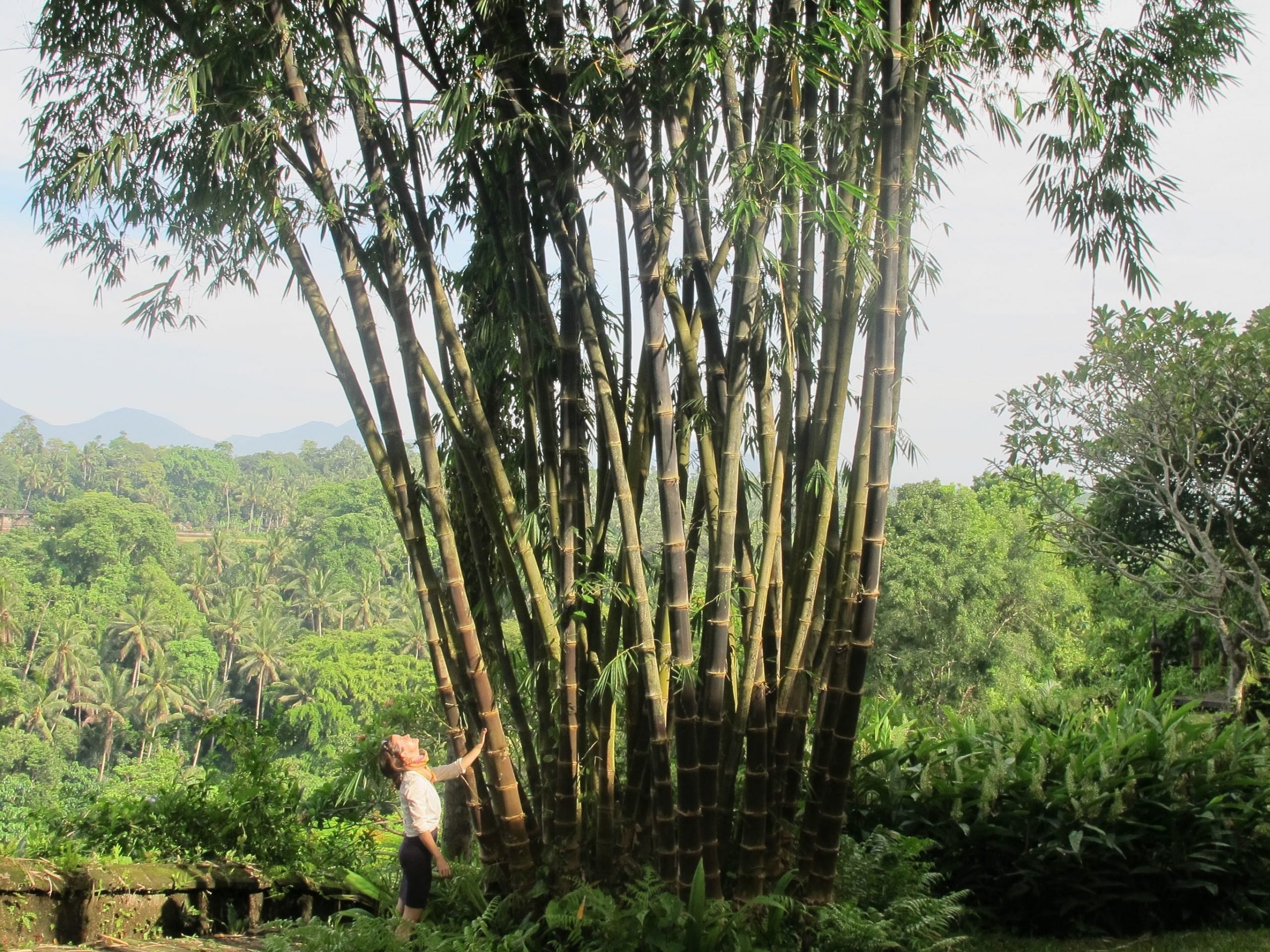
Courtesy Ibuku
Bringing bamboo to new heights
Hardy, by her own admission, does not have any traditional architectural training - although she has been told that could be a plus. "I have been told by architects that this could have constrained me and limited the possibilities," said Hardy.
But she doesn't ignore the chance to learn. "I like to soak up information and act intuitively, which only works because I am with a team of expert architects, craftsmen and engineers," she said.
Defit Wijaya, Head of Architecture for Ibuku, told Insider Hardy's fresh outlook has helped take bamboo homes to the next level.
"Not only is it about her design through drawings, but deeper into user experiences, ambiances and personalized design items," he said. "She has an eagle eye and can spot the tiniest details that may need improvement."
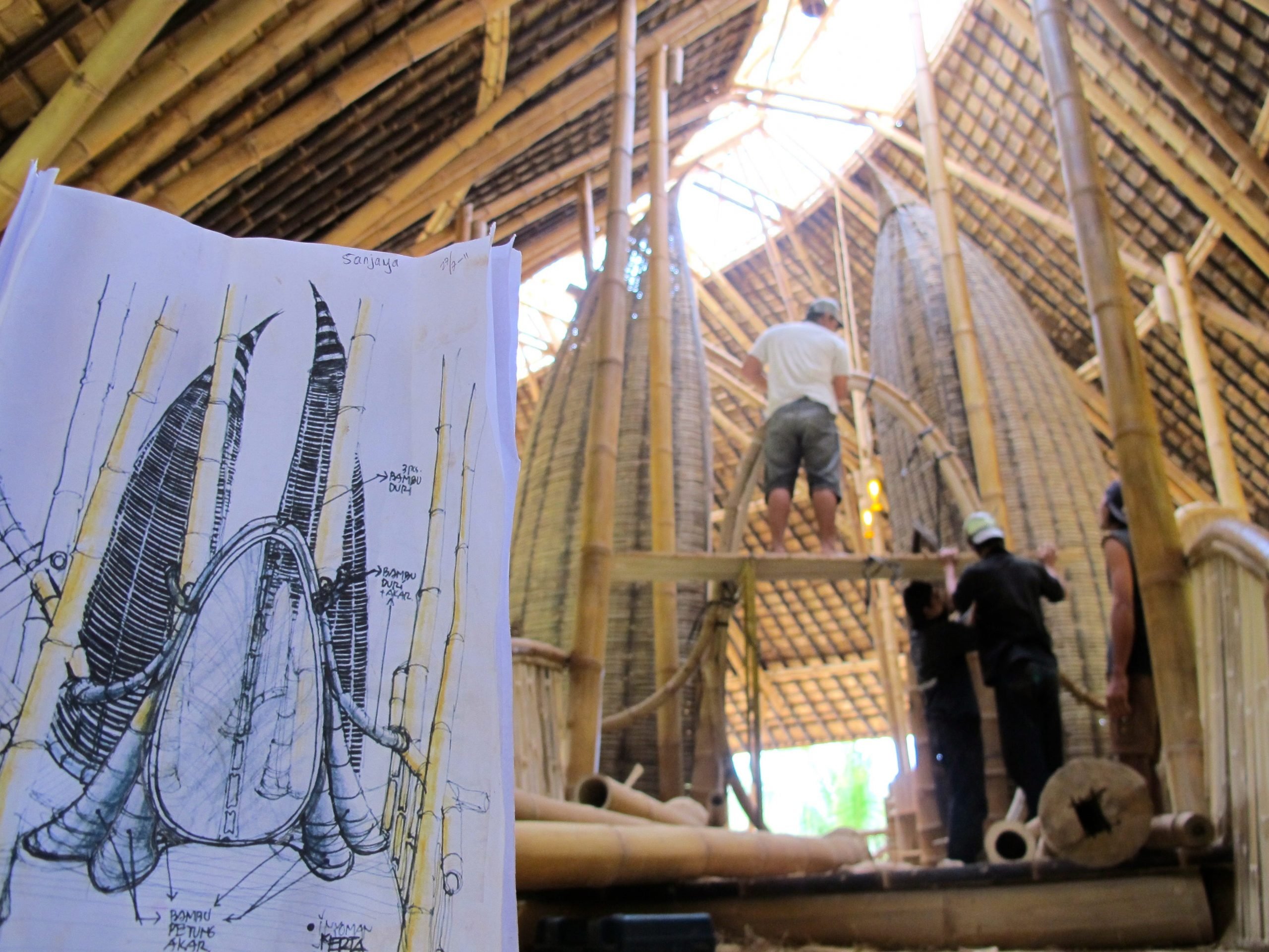
Courtesy Ibuku
Hardy's designs have gathered her numerous accolades, including being named an Architectural Digest Innovator in 2013. In 2019, the same year she was named an honorary Royal Designer for Industry, her work was exhibited at the V&A Museum in London.
She is now taking her organic designs to the international stage, creating bamboo structures in Hong Kong, Singapore, and the Maldives. In October 2020, she built a bamboo event hall in Las Vegas for Area 15 that was commissioned by the new entertainment complex. She's currently creating a series of treehouses on an island in Panama. Her work was recently featured in the show "Home" on Apple+, where each program focuses on a unique home across the globe.
Hardy says that the secret to her design success might have first been spotted by one of her school friends: "My high school roommate called me a realist with my head in the clouds."
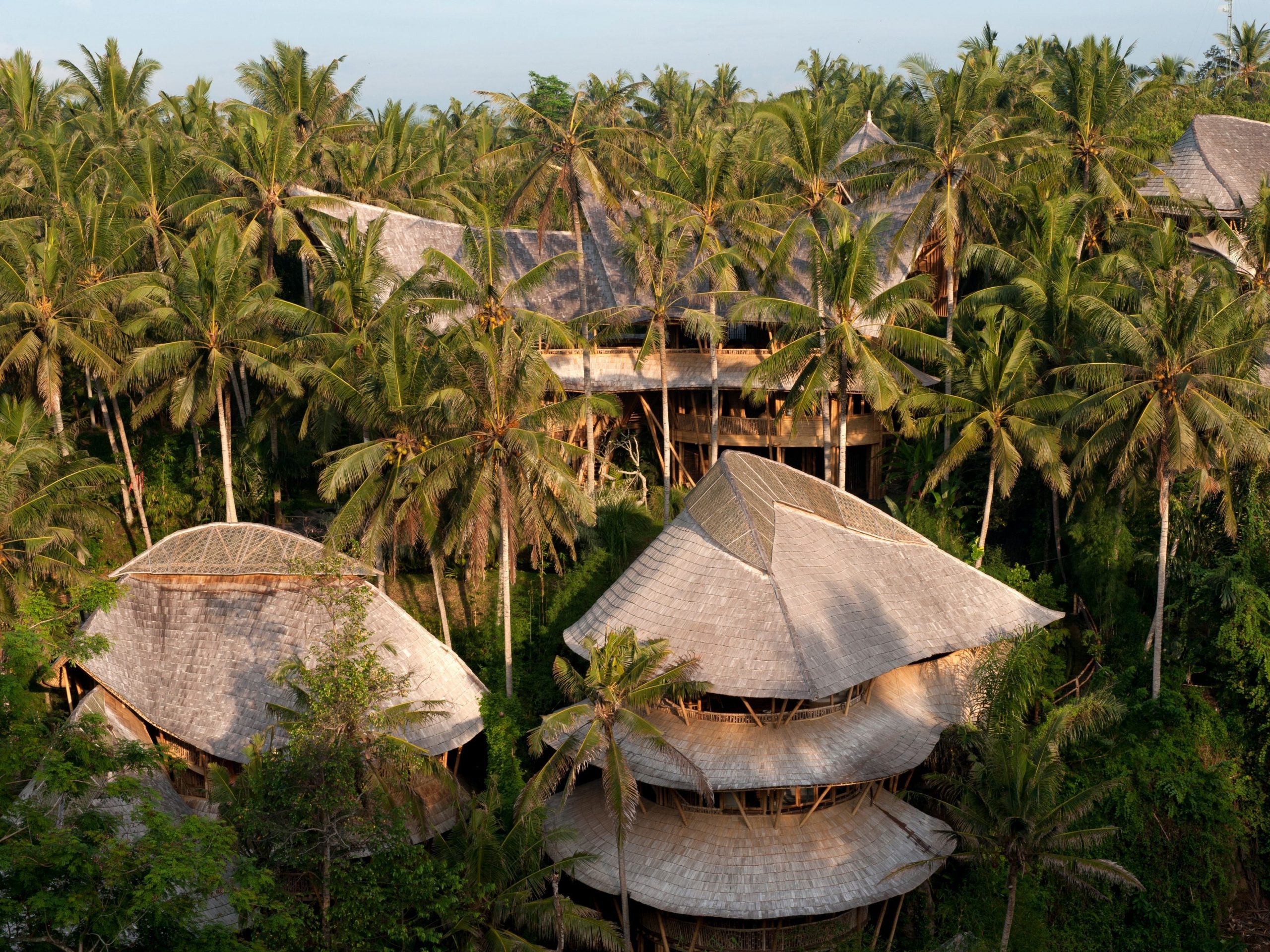
Courtesy Ibuku
Editor's note: If you're an APAC-based freelancer who wants to write stories like this one about real estate and design, email me your pitches at [email protected].
